Most people in places like Southern California and Arizona don’t have furnaces because air conditioning is the name of the game. Still, a properly maintained furnace is essential for those who live up in the mountains.
So what is AFUE, and what does AFUE stand for? AFUE is an acronym for Annual Fuel Utilization Efficiency. This measures how efficiently your furnace can utilize its fuel.
The more efficient the furnace, the more heat a homeowner will get per unit of fuel.
But AFUE can’t be used for everything, and learning how to use AFUE properly is essential when buying a new furnace. This article will define what AFUE is and give some warnings about using the Annual Fuel Utilization Efficiency rating system.
Finally, we will discuss using AFUE ratings to buy a new furnace.
Table of Contents

⭐ What is AFUE?
AFUE stands for Annual Fuel Utilization Efficiency (1) and can be considered SEER or EER ratings for your air conditioner.
AFUE is used to measure the efficiency of a furnace. But unlike SEER, which has an arbitrary rating associated with it (like SEER 16, etc.).
AFUE is actually far easier to read and understand.
A furnace’s AFUE rating is a percentage of how much fuel it can convert into usable heat, with an AFUE rating ranging from approximately 30 to 100 (anything less than around 30 would be useless).
For example, a furnace with a good AFUE rating of 85 would mean that 85% of its fuel is used as usable heat energy that is used to heat your home.
The remaining 15% is lost through its exhaust.
⭐ AFUE and Type of Fuel
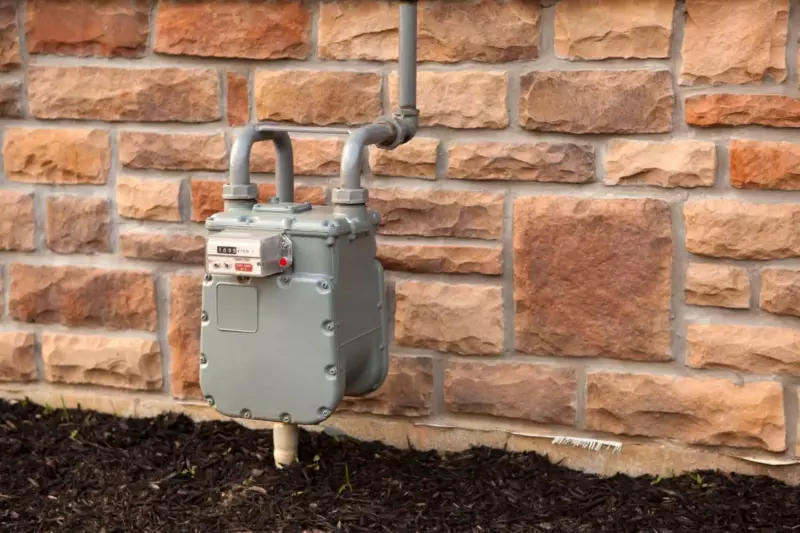
AFUE is important, but if it is the price that you are concerned with, your type of fuel has a more significant effect on your annual expenses.
Different fuels can be combusted at different efficiency rates, as you can see in the graph below. However, electricity is the only means of heating with a 100 AFUE rating.
This is a general guide to the AFUE rating by fuel type to get an idea of which fuels are most efficient.
Note: Given the unique nature of heat pumps, they do use different expressions of energy efficiency, such as COP and HSPF, compared to more conventional heating systems like gas furnaces.
🔥 COP
The Coefficient of Performance (COP) is an expression of the efficiency of a heat pump.
When calculating the COP for a heat pump, the heat output from the condenser is compared to the power supplied to the compressor (2).
🔥 HSPF
Heating Seasonal Performance Factor (HSPF) is a heating efficiency rating for heat pumps.
The higher the rating, the more efficient the heat pump.
A more efficient heat pump will result in less energy use and increased energy savings over the life of the system, compared to a less efficient heat pump (3).
Related Reading: Heat Pump vs Furnace – The Pros and Cons of Each Heating Type
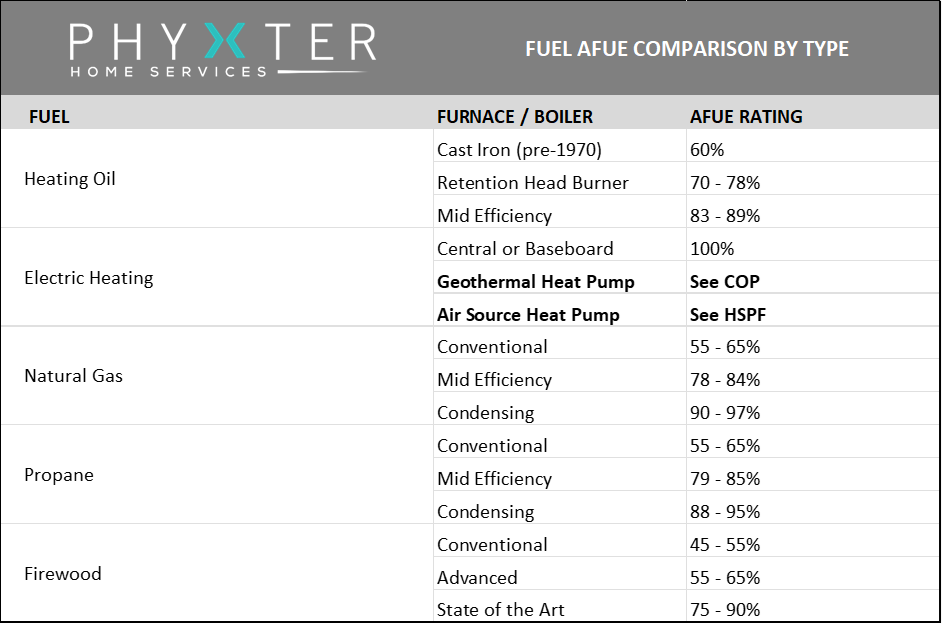
⭐ Cost of AFUE

Simply put, Annual Fuel Utilization Efficiency is just the percentage of fuel used by a furnace.
The higher the number, the better your furnace converts fuel into heat.
However, this efficiency comes at a price, and the more energy efficient your furnace is, the more expensive it is likely to be.
Efficiency is not the same as cost.
Just because your furnace has a high AFUE rating doesn’t mean it will be cheaper to operate than your old furnace!
For instance, electric heat is by far the most efficient type of fuel, with an AFUE rating of 100.
However, it is also one of the most expensive means of heating your house!
Unlike air conditioning, your furnace’s AFUE is not the most significant factor that affects your annual heating expenses – your type of fuel is.
⭐ A Warning About Using AFUE Rating
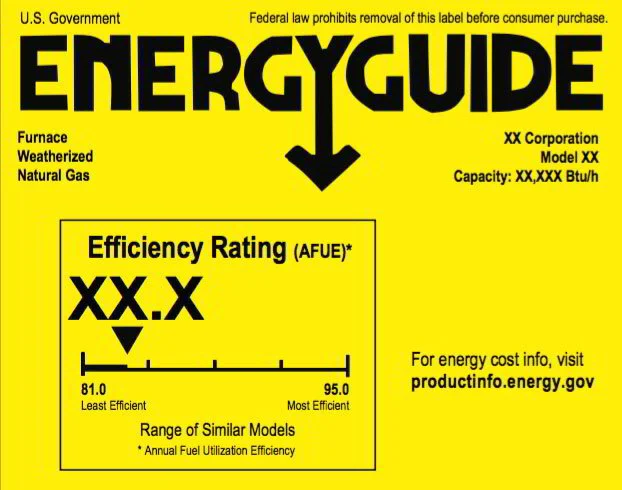
One of the most common misconceptions about AFUE ratings is that they can be used to directly compare the cost of running two different types of furnaces.
Be careful. As we saw above, your fuel type is the most significant factor in lowering your annual energy bills in the winter.
For example, an electric heater will efficiently run circles around a natural gas furnace.
Still, it can’t even come close to beating it in cost to operate.
Therefore, gas furnaces will be cheaper than an electric heater.
Simply put, AFUE has little effect on comparing the cost to operate.
It is only a means of comparing two of the same type of furnaces with regards to their use of heating energy.
Whereas AFUE can compare two different furnaces of the same kind (i.e., two different propane furnaces), it cannot directly compare the cost of operating two different types of furnaces (i.e., propane vs. fuel oil).
For example, if you are trying to decide between a Carrier propane furnace with an AFUE of 96 and a Lennox propane furnace with an AFUE of 80, the Carrier furnace will by far be cheaper to operate.
However, AFUE could not be used to compare a Carrier electric heater with an AFUE of 100 to a Lennox natural gas furnace with an AFUE of 84 because they are different fuel types.
Therefore, even though the Carrier electric furnace is more efficient, it will also be more expensive to run despite this extra energy efficiency.
⭐ How to Properly Use the AFUE Rating to Buy a New Furnace
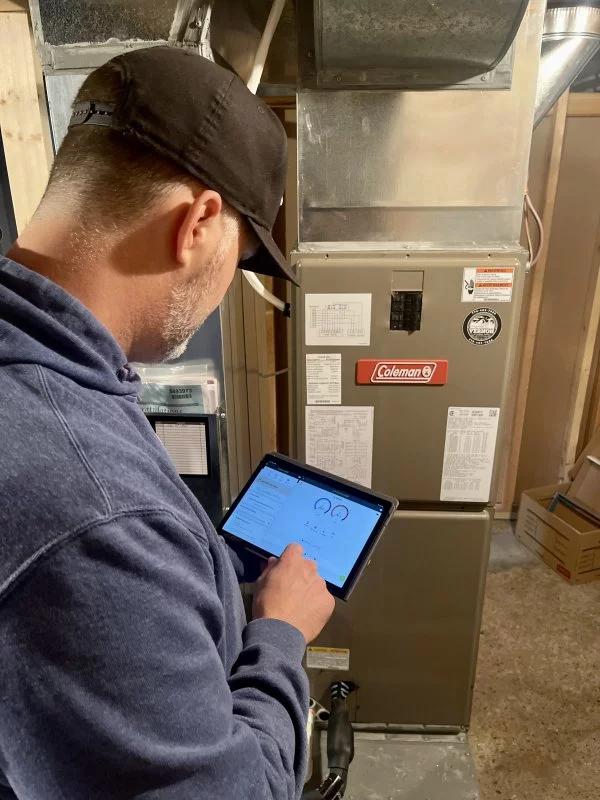
You’ve learned so far what AFUE is and how it cannot be used to measure the cost of operating two different types of furnaces.
This section will tell you the proper way to use AFUE to purchase a new furnace.
✔️ Step 1: What are the long-term goals for your house?
There is a big difference between holding on to a house for a few years and living in the dream house you want to retire.
As I mentioned above, a higher AFUE rated furnace will also cost you more to buy.
So if you are in a smaller two-bedroom house but plan on upgrading to a four-bedroom house in a few years when you start having kids, then a lower AFUE rated furnace would be more cost-effective in the long run.
This is because of the cost of purchasing a high AFUE. The super-efficient furnace would be recuperated over the life of the furnace.
But if you are selling your house in a couple of years, there is no way that you will make up the price difference between an AFUE 80 furnace and an AFUE 96.8 furnace.
However, if you are building your dream house and plan on spending the next 30 years in it, then it is definitely worth spending the money on a high AFUE furnace.
If you have no idea or can’t decide, I recommend splitting the difference and going for a medium-AFUE option.
✔️ Step 2: What Type of Furnace Fuel is Best for You?
Much of what determines the type of furnace you will buy depends significantly on where you live.
For instance, if you live in a well-populated, suburban area, natural gas or electric will be the most common heat source.
However, if you live in more rural areas, the infrastructure probably doesn’t exist to deliver natural gas to your house, and electricity prices can increase.
That is why it is much more common to see propane and fuel heating oil as energy sources for furnaces in rural areas, where they can be delivered.
A wood-burning stove would also be more common in rural areas where natural gas or even propane might be scarce or more expensive.
Make some phone calls in your area and examine the prices for various fuel types.
Just because your old propane furnace needs to be replaced does not mean that buying a new propane furnace is the most cost-effective option for its replacement (but it usually is if they did it right the first time – don’t assume).
Again, look at the prices for various fuels in your area and decide which option is best for you.
Take a look at the map below – as you can see, the type of fuel used in a furnace varies greatly depending on what area of the country you live in.
For example, in the southern United States, where using heat in the winter is not that common, electricity is more widely used than in Seattle, WA, where natural gas is more common (4).
Do some research and decide which fuel type is right for you.
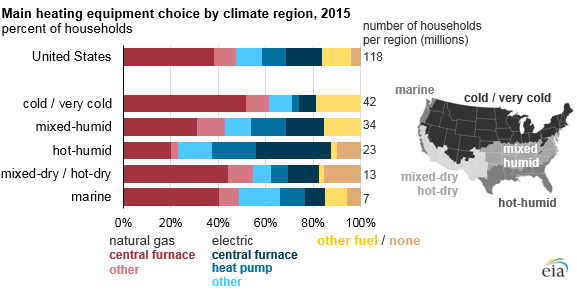
✔️ Step 3: Using AFUE to Shop for Furnaces and Compare Costs.
After you have answered those two questions: your long-term goals for your house and which fuel type is best for you and your home, should you start shopping for furnaces?
For our example, we will say that we decided that this is our dream home, and we are going to retire here.
We will also say that we live in rural Montana, where propane is the most cost-effective option. We can now use AFUE to shop for our furnace.
Our options are as follows:
- Lennox Signature Series Propane Furnace – AFUE 98 – Cost $6,600 installed without ducting.
- Carrier Infinity Series Propane Furnace – AFUE 98 – Cost $5,700 installed without ducting.
- Carrier Comfort Series Propane Furnace – AFUE 80 – Cost $5,000 installed without ducting.
If you look at your options above, the Carrier Comfort Propane Furnace is cheaper, coming in $600 cheaper than the Carrier Infinity and $1,600 cheaper than the Lennox furnace.
However, since we are planning on staying in this house for some time, we should go with the higher AFUE options.
So we can rule out the Carrier Comfort Furnace as an option. As you can see below, the operating cost difference between a 95 AFUE and an 80 AFUE is 13%:
What this means is that if you have an average monthly heating bill of $100 (average out winter and summer by adding all the months and dividing by 12), then the 98 AFUE options would save you around $13 a month on your heating bill over the 80 AFUE furnaces.
Now that we have narrowed it down to the two 98 AFUE options, we can choose between them using your personal preferences in options and brand
After researching, we have decided on the Carrier Infinity 98 AFUE propane furnace as our best option for this example.
It isn’t as expensive as the Lennox furnace, and it has more options and higher reliability.
We can then figure out how long it will take to pay the difference between our new high-efficiency furnace and the cheaper, 80 AFUE option that we were considering:
$5,700 (cost of Carrier Infinity Furnace) – $5,000 (cost of Carrier Comfort Furnace) = $700
We are paying $700 for our extra 18 AFUE points.
However, we can see that we are saving about 13% on our energy expenses by switching to the 98 AFUE Carrier Infinity Furnace.
- 33% – 20% = 13%
- $100 (energy bill) X 0.13 = $13 savings each month.
Next, divide the price difference between the high AFUE furnace and the low AFUE furnace by the amount you save each month, then by 12 (the number of months in a year).
- $700 / $13 = 53 months
- 46 / 12 = 4.5 years
So you will pay the difference between an 80 AFUE furnace and your new 98 AFUE furnace in about four and a half years.
If you stay in your house for longer than 4 years, it is worth buying the higher AFUE option. If you are moving in a year, it would be more cost-effective to buy the 80 AFUE option.
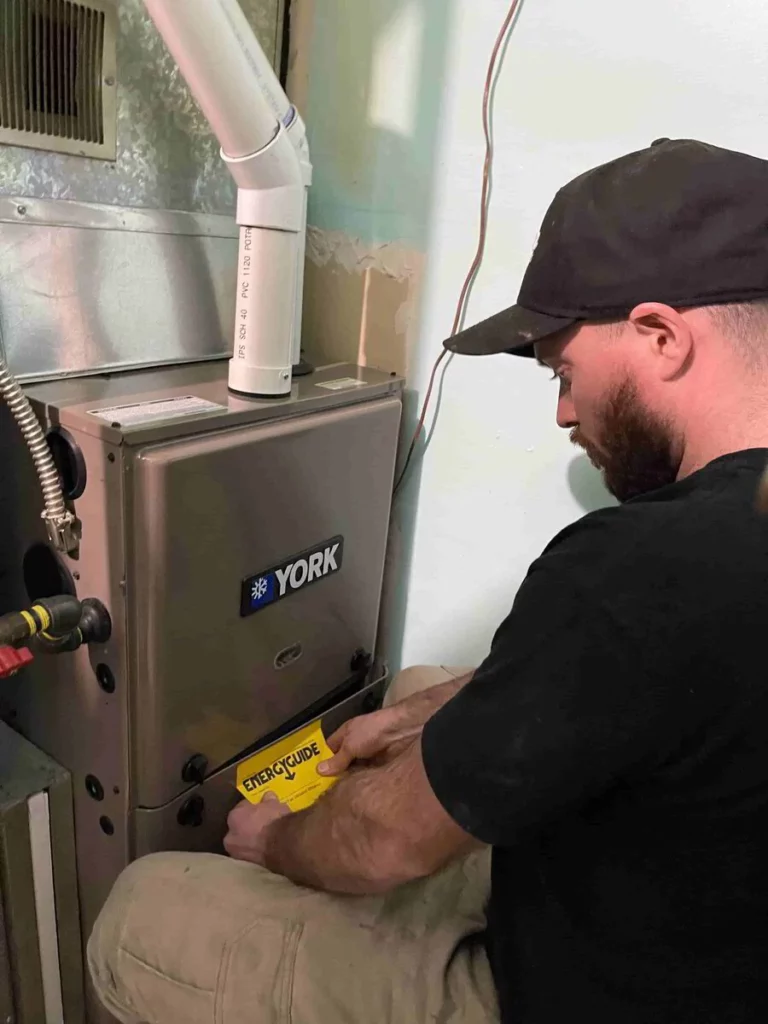
⭐ Final Thoughts on AFUE
What is AFUE? AFUE is a direct measure of how efficiently your furnace can translate the fuel that it burns into usable heat during the heating process.
However, this measure of efficiency can only be used to compare two of the same types of furnaces.
As a general rule, the type of fuel your heating system uses is far more important in determining your operating costs than the AFUE.
Once you decide what type of fuel to use, you can then use AFUE to make a direct comparison between units and calculate how much you can save by going for the high AFUE unit.

For more information on related topics, see Furnace Not Blowing Air and What is a Furnace Burner, and Why You Should Keep Them Clean!
Or you can visit the Phyxter Blog and read more about your home’s heating systems or HVAC system.
Finally, if you live in the North and Central Okanagan area, give us a call. We’d be happy to answer any questions you might have.
If you need the service of your current system or a new heating system, we have the best HVAC professionals on the market.
References:
1. Trane, What Does AFUE Stand For?, retrieved from https://www.trane.com/residential/en/resources/glossary/what-is-afue/
2. Grundfos, COP (Coefficient of Performance), retrieved from https://www.grundfos.com/solutions/learn/research-and-insights/coefficient-of-system-performance
3. Lennox, Heating Seasonal Performance Factor (HSPF), retrieved from https://www.lennox.com/buyers-guide/guide-to-hvac/glossary/heating-seasonal-performance-factor-hspf
4. US Energy Information Administration, Use of Energy Explained, retrieved from https://www.eia.gov/energyexplained/use-of-energy/homes.php

